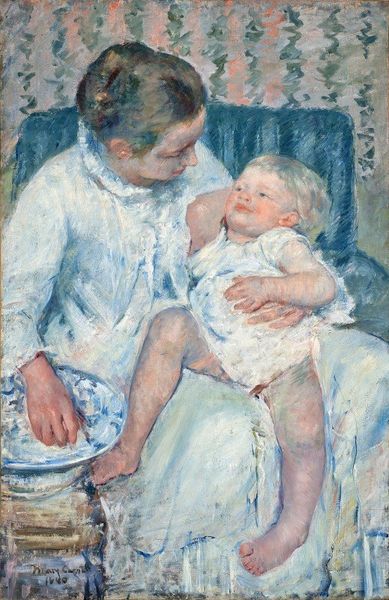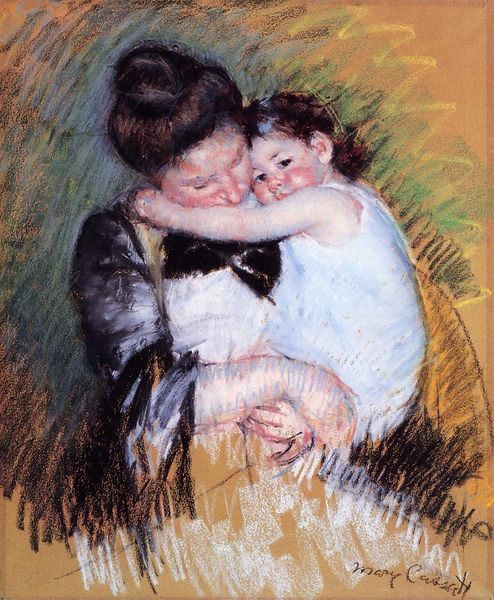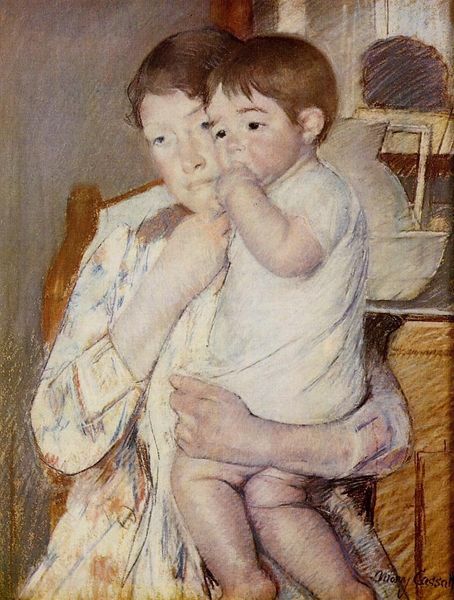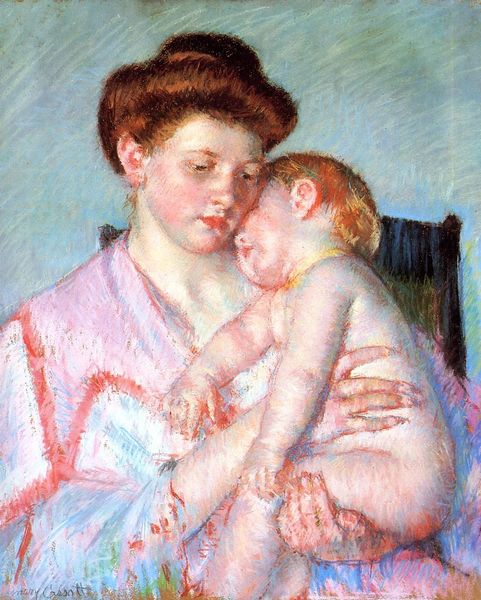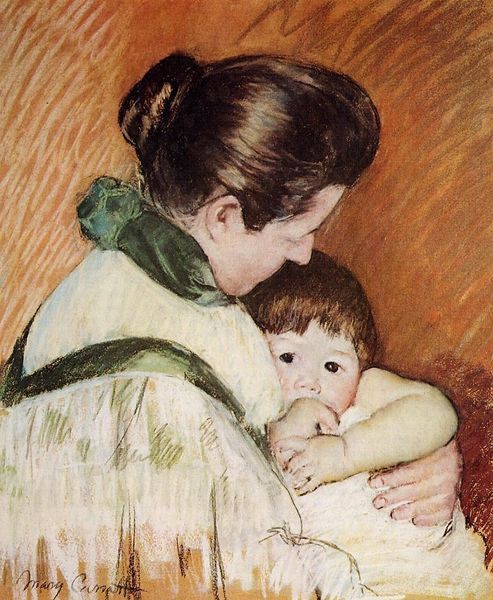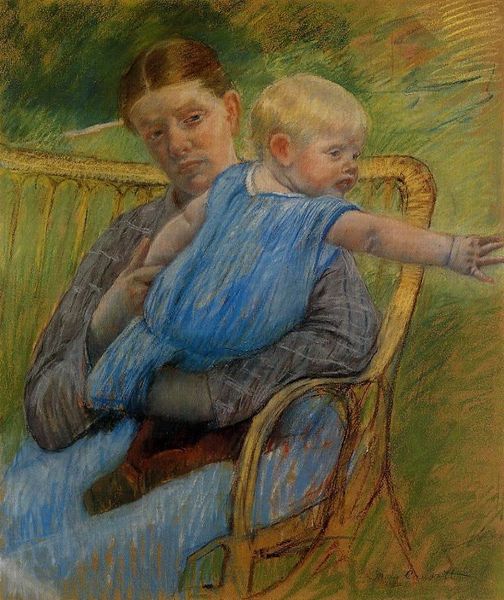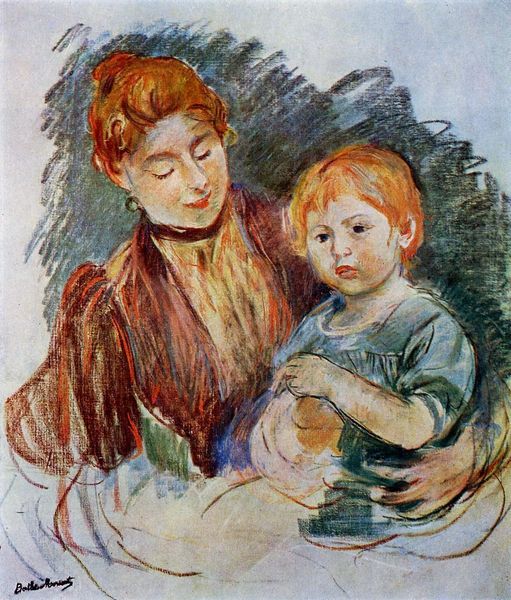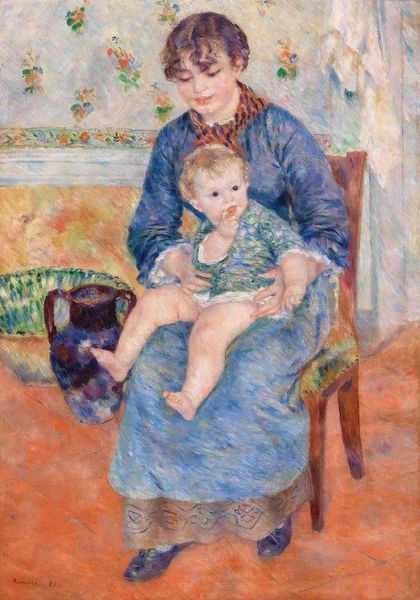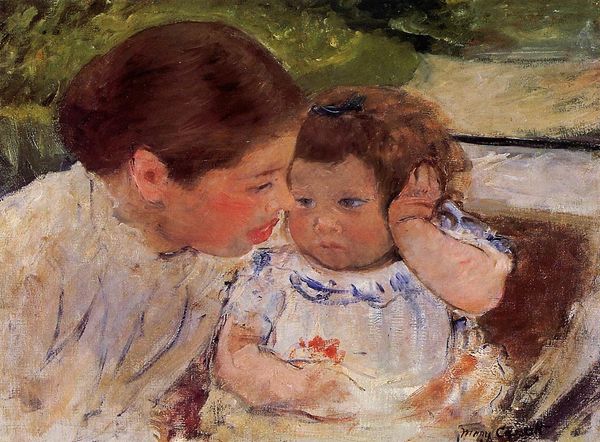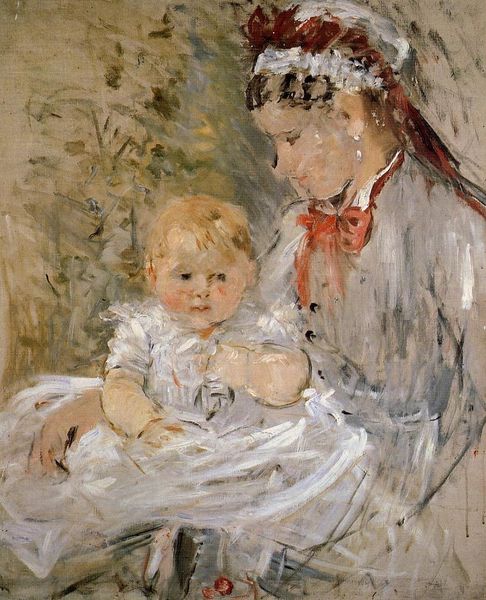
Dimensions: 71.12 x 58.42 cm
Copyright: Public domain
Curator: Oh, the colors in this one! They're singing to me already. Editor: Indeed. We're looking at Mary Cassatt’s "Jenny and Her Sleepy Child," an oil painting completed in 1891. Cassatt was one of the few American artists to exhibit with the Impressionists in France. Curator: Impressionists... well, yes, but with this beautiful muted light, and these gorgeous blushes in the skin tones... it's more like an intimate secret, isn’t it? Editor: Definitely, she was deeply influenced by Degas and Japanese prints but filtered it through her unique lens. She focused on the domestic sphere, a realm often dismissed as unimportant. And this painting highlights some questions about the nature of caregiving, which falls disproportionately on women, and often goes unnoticed, uncompensated and, like in this composition, even unseen. Curator: Right! Look at Jenny's face; she isn't looking at the kid but off somewhere beyond… It makes you wonder what's on her mind? I also love how raw and immediate it feels; there’s nothing fussy or idealized. Editor: Precisely. By refusing to prettify motherhood, she pushes us to grapple with its complexities. The loose brushstrokes and unfinished feel contribute to the honesty. Consider that around this period the American and European economy experienced enormous growth, the American middle classes were gaining enormous fortunes while many lived below poverty lines. But she doesn’t fall into narratives that idealized wealth; Cassat always shows the emotional complexities behind them. Curator: It is so interesting what is said and what isn't when it comes to motherhood; to capture that visually is quite radical. I have the sensation that she also invites me, the viewer, to a special glimpse; a privilege to the inner world of these two. Editor: Absolutely, she turns this quiet moment into a powerful statement about a lived reality of gender and class. The very act of making these paintings visible works to validate experiences historically excluded from the art historical canon. Curator: I see here not only technique but tenderness as well... It stays with you. Editor: I agree. By depicting these candid moments of affection, she carves a space to remember and revisit, giving a platform to previously dismissed stories.
Comments
No comments
Be the first to comment and join the conversation on the ultimate creative platform.

